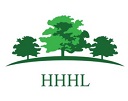



Hempland is defined in The Parish Chest by W E Tate (1964) : a small plot for the cultivation of hemp, in accordance with the statutes of 1533 and 1563; by extension any very small plot or pightle, especially one going with a dwelling
.
Hemp has been grown and used in the UK for thousands of years and was once one of the most valuable commodities in the country, if not the world.
Most sources cite the earliest mention of hemp in the UK being a note about Cambri Formosa - a Celtic princess who taught women to sew and weave with hemp in 373 BC. Some sources suggest hemp was brought to Britain from Asia at around 800 BC. Roman and Anglo-Saxon hemp findings in this country date back to 140 - 400 AD, while findings from a number of geographically dispersed locations within the UK have been dated back to the early 12th century.
The cultivation and use of hemp in the UK proliferated from the Elizabethan era (roughly 1550 AD - 1600 AD) onwards, right up to the mid-nineteenth century. This was due to hemp being used in a number of capacities; most notably on naval & commercial ships throughout this time period.
Hemp was used in many ways including the ships' sails, rigging, ropes (cordage), sacks (for carrying cargo) and often even the sailors' clothes & uniforms. Demand for hemp from the Royal Navy and trading companies alike meant hemp farming in Britain was commonplace.
During the reign of Henry VIII, it was compulsory to grow a quarter acre of hemp for every 60 acres under cultivation. This was to ensure the supply remained steady and some claim these laws are actually still on the books today, although not enforced.
Many place names derive from the Celtic and Anglo-Saxon words for hemp, some of which survive to this day. Perhaps the most well-known of these being Hampshire, derived from the German 'hanf', Swedish 'hampa' or the Danish and Norwegian 'hamp'. Hampshire, home to Southampton & Buckler's Hard, was a county of significant naval importance.
Hemp cultivation in the UK was re-legalised in 1993 and is now a licensed activity (find out more on the legalities of growing hemp in the UK here). The licence dictates, among other restrictions, that hemp can be grown as long as the strain used does not contain more than 0.3% THC - the psychoactive chemical responsible for its initial criminalisation -; compared to the 20% found in psychoactive strains.
Mark Bailey A Marginal Economy page 142 ..Neither plant (flax & hemp) was sown in the open field but was confined to courtyards and gardens .. Most cultivation was on a modest scale and in the main for domestic use. It was used to make linen cloth, nets for rabbiting and fishing, and rope
… and on p.185 As the King's ferreters were accustomed to making their own nets, it seems likely that many warreners and trappers did the same for themselves from locally grown hemp, and presumably made a few extra for sale to the wider market.
Perhaps hemp had been on the hempland at High Lodge, long before the statutes of Henry VIII and Elizabeth I required it for the navy and was grown by the warrener for his own use?